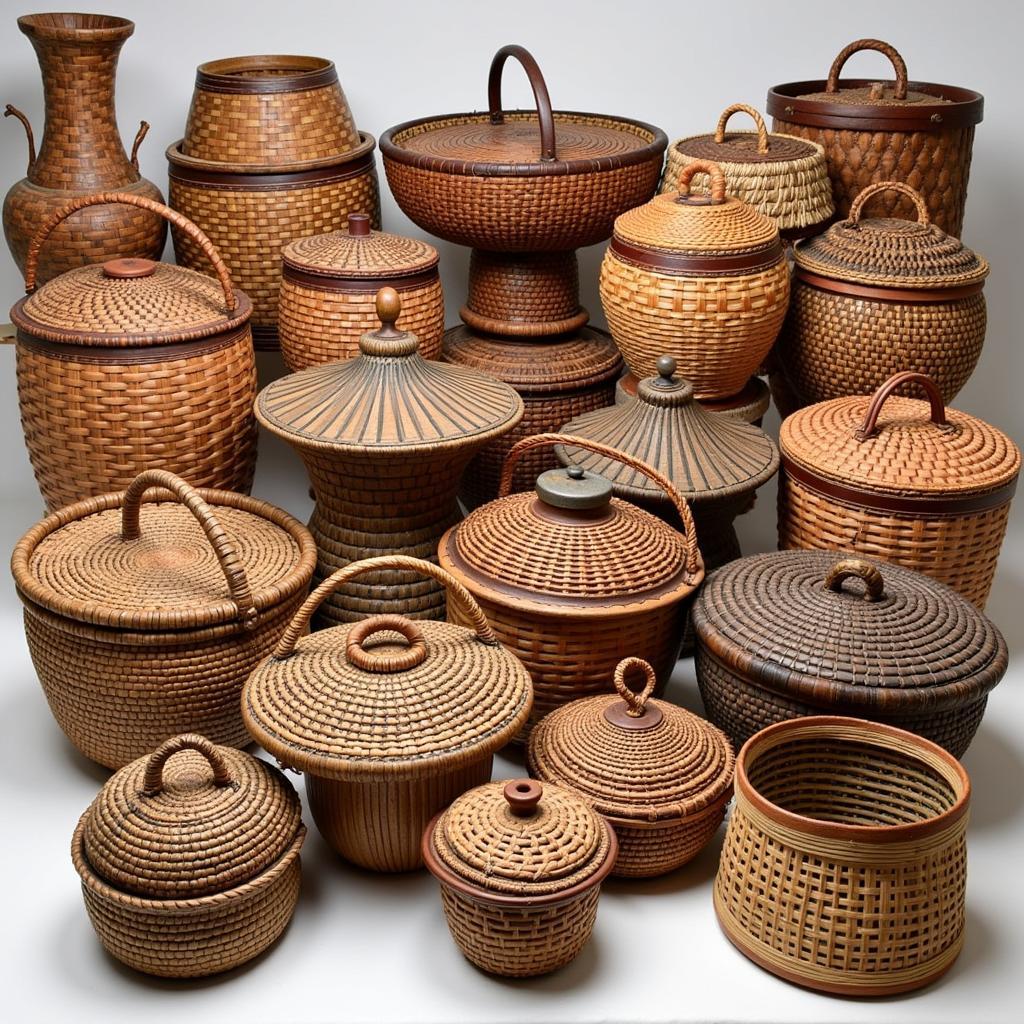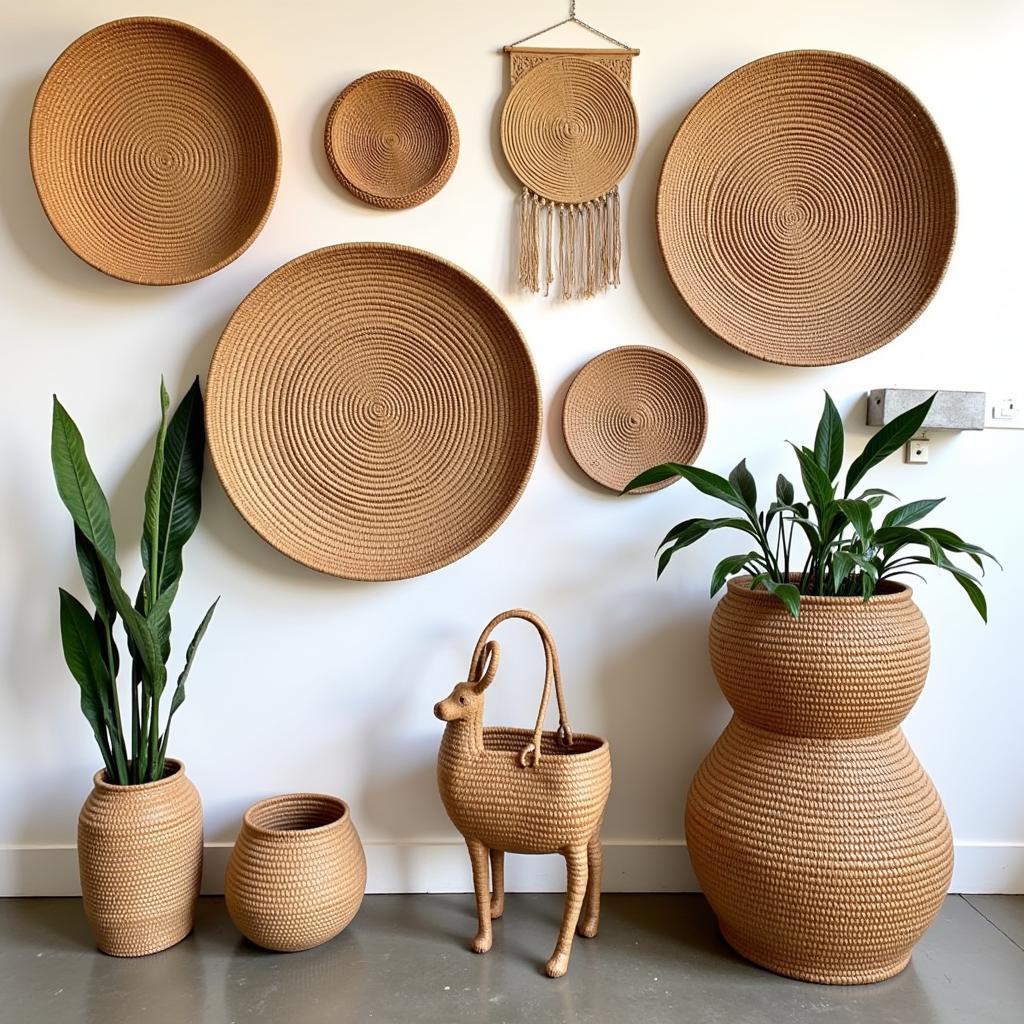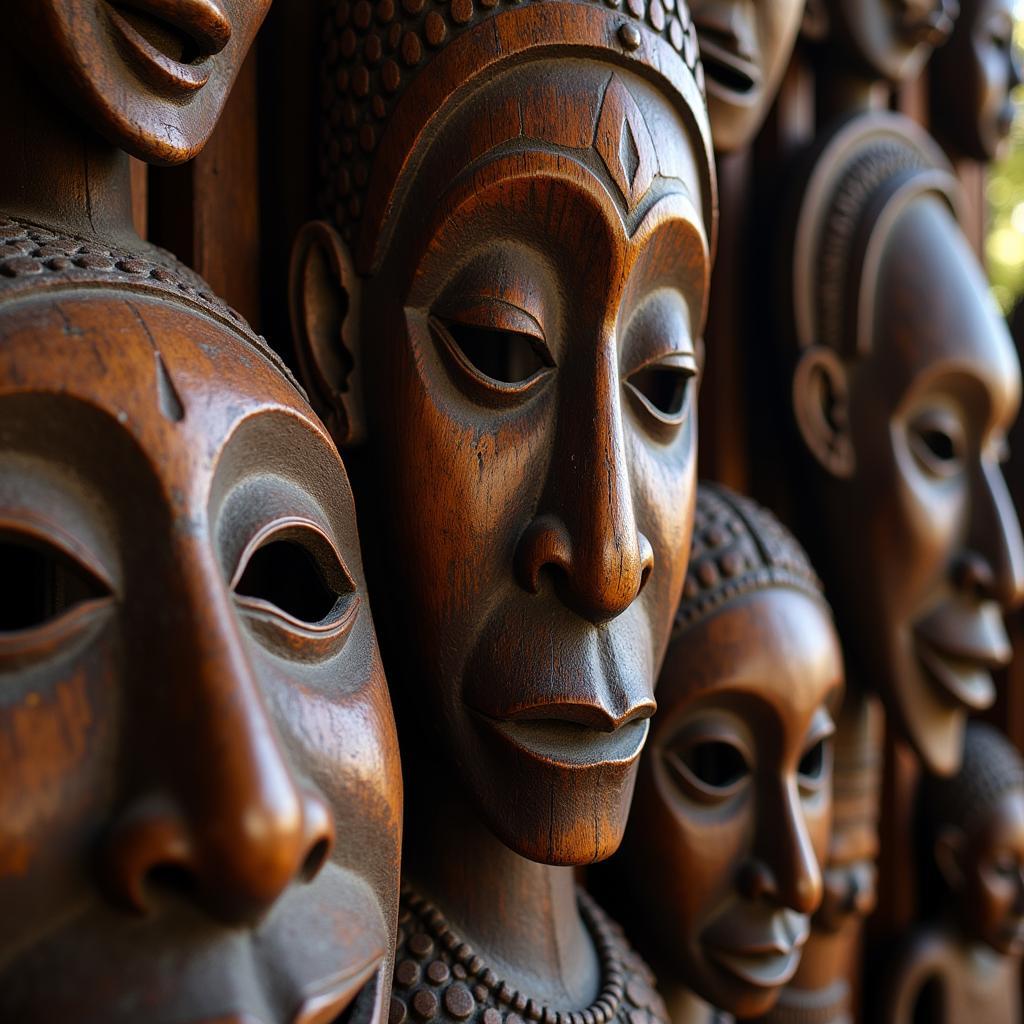African Baskets: Woven Treasures of Culture and Heritage
African Baskets are far more than simple containers; they are vibrant expressions of artistry, cultural heritage, and practical ingenuity passed down through generations across the African continent. These woven masterpieces, each unique in design and purpose, offer a glimpse into the diverse traditions and lifestyles of the communities that create them.
From Everyday Objects to Intricate Art Forms: Exploring the Diversity of African Baskets
 Variety of African Baskets
Variety of African Baskets
Across Africa, basket weaving is an essential part of daily life. African flat baskets are used to carry food, winnow grains, and store household items, while larger baskets serve as cradles, fishing traps, and even granaries. Each region, and often each village, has developed its own distinctive style, incorporating local materials and weaving techniques to create baskets that are both functional and beautiful.
Woven with Meaning: The Symbolism Behind the Strands
The intricate patterns woven into African baskets often hold deeper significance, reflecting spiritual beliefs, ancestral stories, or social status. Geometric motifs might represent elements of nature like rain or animals, while specific colors can signify prosperity, fertility, or mourning. Some baskets are even created for specific ceremonies, becoming treasured heirlooms passed down through families.
For instance, the intricate patterns found on Zulu baskets, often featuring triangular motifs, represent shields and spears, reflecting the tribe’s warrior history. Among the Kuba people of Central Africa, baskets are not only practical items but also prestige objects, with elaborate designs indicating the owner’s social standing.
“The act of weaving itself is a form of storytelling,” explains Abena Agyeman, a Ghanaian textile artist. “Each basket holds within its fibers the stories, beliefs, and history of its maker and their community.”
Materials and Techniques: A Testament to Resourcefulness and Creativity
African baskets are typically crafted from natural, locally-sourced materials, showcasing the deep connection between the artisans and their environment. Palm leaves, reeds, grasses, bamboo, and even recycled plastic are carefully harvested and prepared, often using techniques passed down through generations.
The fibers are then meticulously woven together, often in a spiral coil technique, creating sturdy and durable baskets that can withstand daily use. Dyes, extracted from roots, bark, or berries, add vibrant hues, while beads, shells, and leather embellishments further enhance their beauty.
African Baskets in the Modern World: From Homes to Runways
 Modern African Basket Designs
Modern African Basket Designs
Today, African baskets are experiencing a well-deserved surge in global appreciation. Their timeless beauty and cultural significance have captivated designers, collectors, and individuals seeking unique and ethically-sourced pieces. From home décor accents and fashion accessories to museum exhibits and high-end boutiques, these woven treasures are finding new life and recognition on the international stage.
Where to Find Authentic African Baskets: Supporting Ethical Sourcing
When purchasing African baskets, it’s crucial to prioritize ethical sourcing and fair trade practices. Seek out retailers and organizations that work directly with artisans, ensuring they receive fair wages and that their craft is celebrated and protected. Online platforms specializing in handmade goods, cultural centers, and fair trade shops are great places to start your search.
By choosing authentic African baskets, you are not just acquiring a beautiful object, you are investing in the preservation of cultural heritage and supporting the livelihoods of talented artisans across the continent.
FAQ: Unraveling the Mysteries of African Baskets
1. How long does it take to make an African basket?
The time required to create an African basket varies depending on its size, complexity, and the materials used. Some smaller, simpler baskets can be completed in a few days, while larger, more intricate pieces can take several weeks or even months to weave.
2. How do I care for my African basket?
To keep your basket looking its best, dust it regularly with a soft cloth or brush. Avoid exposing it to direct sunlight or moisture, as this can cause fading or damage to the natural fibers. If needed, gently wipe it with a damp cloth and mild soap, then allow it to air dry completely.
3. Are African baskets only used for storage?
While storage is a common use, African baskets are incredibly versatile. They can serve as decorative pieces, planters, laundry hampers, picnic baskets, wall art, and much more. Their uses are only limited by your imagination!
Explore More Woven Wonders:
Interested in learning more about specific types of African baskets? Explore our articles on:
- African baskets Canada: Discover where to find beautiful and ethically-sourced African baskets in Canada.
- African baskets Amazon: Explore a wide selection of African baskets available for purchase online.
- African flat baskets India: Learn about the unique styles and uses of African flat baskets in India.
- African bolga baskets: Delve into the world of Bolga baskets from Ghana, known for their vibrant colors and intricate designs.
Contact us at +255768904061, [email protected] or visit us at Mbarali DC Mawindi, Kangaga, Tanzania for any inquiries. Our dedicated customer support team is available 24/7 to assist you.

